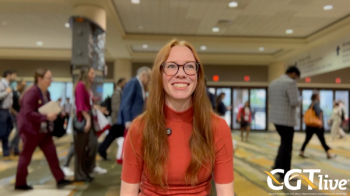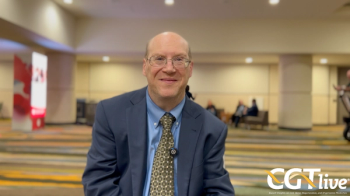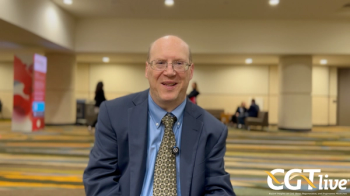
Deepu Madduri, MD, on the Design of the Phase 1b/2 CARTITUDE-1 Trial
The goal of the CARTITUDE-1 study was to evaluate the use of ciltacabtagene autoleucel (cilta-cel; JNJ-68284528) chimeric antigen receptor T-cell therapy in heavily pretreated patients with relapsed or refractory multiple myeloma.
Preliminary results from the phase 1b/2 CARTITUDE-1 trial (NCT03548207) presented at the 2020 ASH Annual Meeting & Exposition revealed that a single low-dose infusion of ciltacabtagene autoleucel (cilta-cel; JNJ-68284528) chimeric antigen receptor (CAR) T-cell therapy resulted in early, deep, and durable responses in heavily pretreated patients with relapsed or refractory multiple myeloma.
In an interview with CancerNetwork®, Deepu Madduri, MD, assistant professor of Medicine (Hematology and Medical Oncology), associate director of Cellular Therapy Service, and director of Clinical Operations with the Center of Excellence for Multiple Myeloma at The Tisch Cancer Institute and the Icahn School of Medicine at Mount Sinai, discussed the study design.
Transcription:
The CARTITUDE-1 [experimental therapy] is known as JNJ-4528, or is now known as ciltacabtagene autoleucel or cilta-cel. It’s actually a study for a structurally distinct, second-generation chimeric antigen receptor T-cell therapy with 2 BCMA binding domains [and] consists of a phase 1b and a phase 2 portion.
The primary objective of the phase 1b [portion] of CARTITUDE-1 was to characterize its safety and confirm the recommended phase 2 dose. And then the primary objective of the phase 2 portion was to evaluate its efficacy.
For the patients to be eligible for the study, they needed to have progressive multiple myeloma per IMWG [International Myeloma Working Group] criteria, have good performance status, and have measurable disease. These patients also had to have 3 or more prior therapies or be double refractory and be exposed to a [proteasome inhibitor], an [immunomodulatory drug], and an anti-CD38 [antibody].
The way the study really worked was once the patient was screened and enrolled, he or she underwent apheresis and was offered bridging chemotherapy as needed. Then all patients undergo lymphodepleting chemotherapy with fludarabine and Cytoxan [cyclophosphamide] from day –5 to day –3 and get infused with cilta-cel on day 1. And these patients are actually monitored in the hospital anywhere from 10 to 14 days [after infusion] for any toxicity.
Newsletter
Stay at the forefront of cutting-edge science with CGT—your direct line to expert insights, breakthrough data, and real-time coverage of the latest advancements in cell and gene therapy.
















































